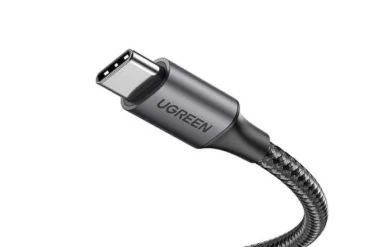2023 Tesla Powerwall: Revolutionizing Home Energy Storage?
Table of Contents
The Rise of Home Energy Storage
With the increasing demand for sustainable and efficient energy solutions, home energy storage systems have emerged as a game-changer in the renewable energy industry. One notable player in this field is Tesla Powerwall, which has been making waves with its innovative approach to storing and utilizing electricity.
The Tesla Powerwall, introduced in 2015, is a rechargeable lithium-ion battery pack that can be installed in homes to store excess energy generated by solar panels or the grid. This stored energy can then be used during times of high demand or power outages, reducing reliance on traditional energy sources and providing homeowners with greater independence and cost savings.
One of the key advantages of the Tesla Powerwall is its compact design and ease of installation. The sleek and wall-mounted unit can be seamlessly integrated into existing electrical systems, making it a practical choice for both new and existing homes. Additionally, the Powerwall is equipped with smart technology that allows users to monitor and control their energy consumption through a mobile app, empowering homeowners to make informed decisions about their energy usage.
The rise of home energy storage systems like the Tesla Powerwall has opened up new possibilities for homeowners to become more self-sufficient and environmentally conscious. Here are some reasons why these systems are gaining popularity:
- Energy Independence: By storing excess energy, homeowners can reduce their reliance on the grid and have a more stable and reliable power supply, even during outages.
- Cost Savings: Energy storage systems can help homeowners save money by allowing them to use stored energy during peak periods when electricity prices are higher.
- Environmental Benefits: Using stored energy reduces the need for fossil fuel-based electricity, resulting in a decreased carbon footprint and a more sustainable energy future.
- Grid Stability: Home energy storage systems can contribute to grid stability by balancing energy supply and demand, especially in areas with high renewable energy penetration.
As technology continues to advance, home energy storage systems like the Tesla Powerwall are expected to become even more efficient, affordable, and accessible. With the potential to revolutionize how we consume and manage electricity, it is no wonder that they are garnering significant attention and driving the transition towards a cleaner and more sustainable energy landscape.
Understanding the Tesla Powerwall
The Tesla Powerwall is a revolutionary home energy storage device that is set to transform the way we power our homes. Developed by Tesla, the renowned electric vehicle manufacturer, the Powerwall offers homeowners a sustainable and efficient solution for storing excess energy generated by solar panels or during off-peak hours for later use.
Here are some key features and benefits of the Tesla Powerwall:
- Energy Storage: The Powerwall is a lithium-ion battery pack that can store electricity for use during power outages or when the demand for energy is high. It has a storage capacity of 13.5 kWh, which is enough to power the average home for several hours.
- Time-Based Control: With time-based control, the Powerwall allows homeowners to take advantage of off-peak electricity rates by charging during low-demand periods and discharging during peak hours. This can result in significant cost savings on energy bills.
- Backup Power: In the event of a power outage, the Powerwall seamlessly switches to its backup mode, providing a reliable and uninterrupted power supply to essential appliances and devices in the home.
- Smart Energy Management: The Powerwall is equipped with smart energy management software that optimizes energy usage and ensures efficient distribution. It can prioritize powering critical appliances or charge electric vehicles, depending on the homeowner’s preferences.
- Integration with Solar Panels: When combined with solar panels, the Powerwall allows homeowners to become more self-sufficient, as excess energy generated during the day can be stored and used during the night or cloudy days.
The Tesla Powerwall is not only environmentally friendly but also offers homeowners greater control over their energy consumption and reduces reliance on the grid. It is a step towards achieving energy independence and a sustainable future.
Advantages of the 2023 Powerwall
The 2023 Tesla Powerwall is set to revolutionize home energy storage with its advanced features and benefits. Here are some of the advantages of this groundbreaking technology:
- Enhanced Capacity: The 2023 Powerwall boasts a higher capacity than its predecessors, allowing homeowners to store more energy for their household needs. With a larger storage capacity, users can rely on the Powerwall to power their homes for longer periods, even during extended power outages.
- Improved Efficiency: Tesla has made significant advancements in the efficiency of the Powerwall. The 2023 model has a higher round-trip efficiency, ensuring minimal energy loss during the charging and discharging process. This means more energy is available for use, increasing overall system efficiency and reducing electricity costs.
- Seamless Integration: The 2023 Powerwall is designed to seamlessly integrate with solar panels and other renewable energy sources. This allows homeowners to maximize the energy generated from their solar systems and store any excess energy for later use. With the Powerwall, users can achieve greater energy independence and reduce their reliance on the grid.
- Smart Energy Management: The 2023 Powerwall comes equipped with advanced energy management features. It can intelligently prioritize energy usage and automatically switch between grid power and stored energy based on demand and electricity rates. This smart functionality optimizes energy consumption and allows homeowners to take advantage of lower-cost electricity during off-peak hours.
- Backup Power: One of the most significant advantages of the 2023 Powerwall is its ability to provide backup power during outages. With its improved capacity and efficiency, the Powerwall can keep essential appliances and systems running, providing homeowners with peace of mind and ensuring continuity of critical functions.
The 2023 Tesla Powerwall is a game-changer in the world of home energy storage. Its increased capacity, improved efficiency, seamless integration, smart energy management, and backup power capabilities make it an attractive choice for homeowners looking to reduce their carbon footprint, increase energy independence, and save on electricity costs.
Potential Challenges and Limitations
While the Tesla Powerwall is certainly an exciting development in home energy storage, there are a few potential challenges and limitations that need to be considered:
- Cost: One of the main barriers to widespread adoption of the Tesla Powerwall is its cost. The initial investment for purchasing and installing the Powerwall can be quite high, making it less accessible for some households.
- Capacity: The Powerwall has a limited capacity, which means it may not be suitable for homes with high energy demands. Larger households or those with energy-intensive appliances may require multiple Powerwalls to meet their needs, further increasing the overall cost.
- Installation: While Tesla provides installation services, the process can still be complex and time-consuming. Homeowners may need to hire professionals to assess their electrical system and make any necessary upgrades, adding to the overall cost and inconvenience.
- Compatibility: The Powerwall is designed to work seamlessly with Tesla solar panels and inverters. While it can also be used with other solar systems, compatibility may vary. Homeowners with existing solar installations may need to invest in additional equipment or modifications to ensure compatibility.
- Grid Dependence: The Powerwall relies on an existing electrical grid connection to function. In the event of a power outage, the Powerwall can provide backup energy, but if the grid goes down for an extended period, the Powerwall’s capacity may be limited. This means it may not be a complete solution for those seeking to go off-grid.
Despite these challenges, the Tesla Powerwall remains a promising technology that has the potential to revolutionize home energy storage. As the demand for renewable energy and sustainable living continues to grow, it is expected that these limitations will be addressed and overcome in future iterations of the product.
The Future of Home Energy Storage
With the introduction of the Tesla Powerwall in 2015, home energy storage took a significant leap forward. Now, as we look ahead to 2023, it’s clear that the Powerwall has revolutionized the way we think about storing and utilizing energy in our homes. But what does the future hold for home energy storage?
Here are some key developments and trends to watch out for:
- Advancements in Battery Technology: As technology continues to evolve, we can expect to see even more efficient and cost-effective battery storage solutions. This means that homeowners will have access to larger capacities and longer-lasting batteries, allowing them to store more energy and reduce their reliance on the grid.
- Integration with Renewable Energy Sources: Home energy storage systems will become increasingly integrated with renewable energy sources like solar and wind power. This will enable homeowners to store excess energy generated during the day and use it during peak demand periods or when renewable sources are not available.
- Smart Home Integration: The future of home energy storage will be closely tied to the rise of smart homes. Integration with smart home technology will allow homeowners to optimize their energy usage, automatically adjusting settings based on energy prices, weather conditions, and individual preferences.
- Grid Independence: As home energy storage systems become more advanced, we can expect to see a shift towards grid independence. With larger storage capacities and improved battery technology, homeowners will be able to rely less on the grid and have greater control over their energy usage.
- Peer-to-Peer Energy Trading: Another exciting development on the horizon is peer-to-peer energy trading. This concept allows homeowners with excess energy to sell it directly to their neighbors, creating a decentralized energy marketplace and promoting local energy production and consumption.
The future of home energy storage is bright. As technology continues to advance and become more accessible, homeowners will have greater control over their energy usage, leading to reduced costs, increased sustainability, and a more resilient energy infrastructure.



























